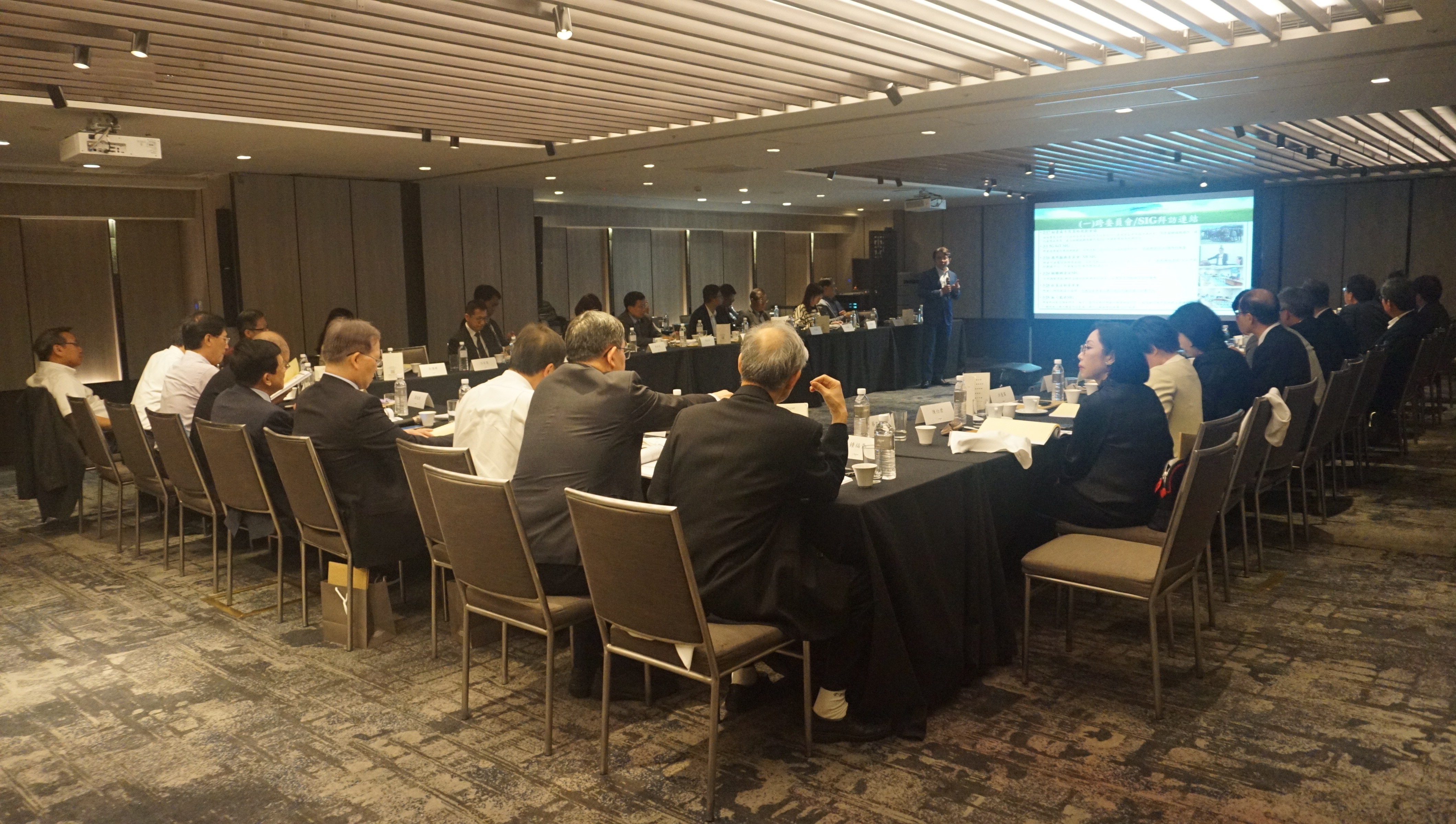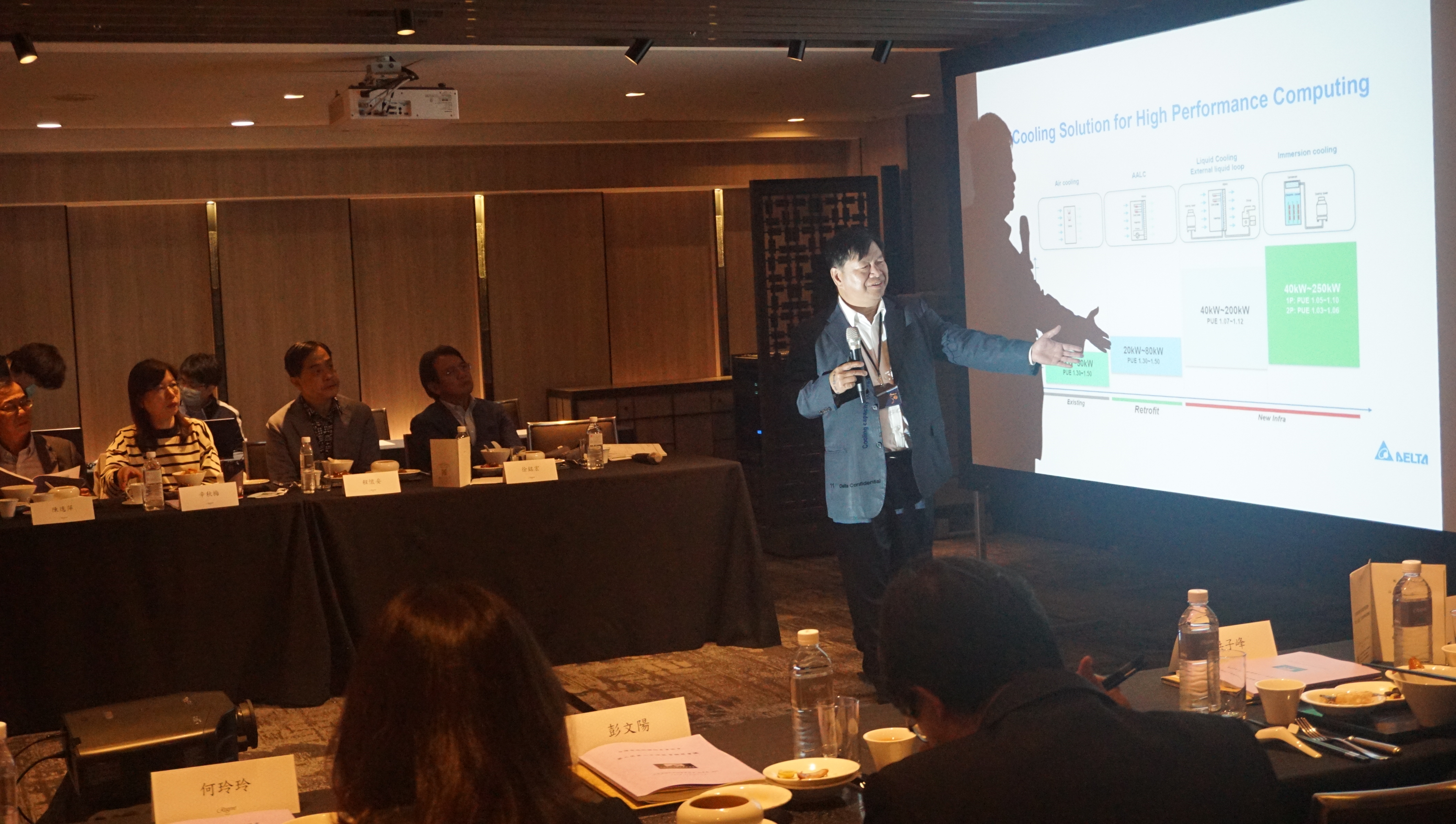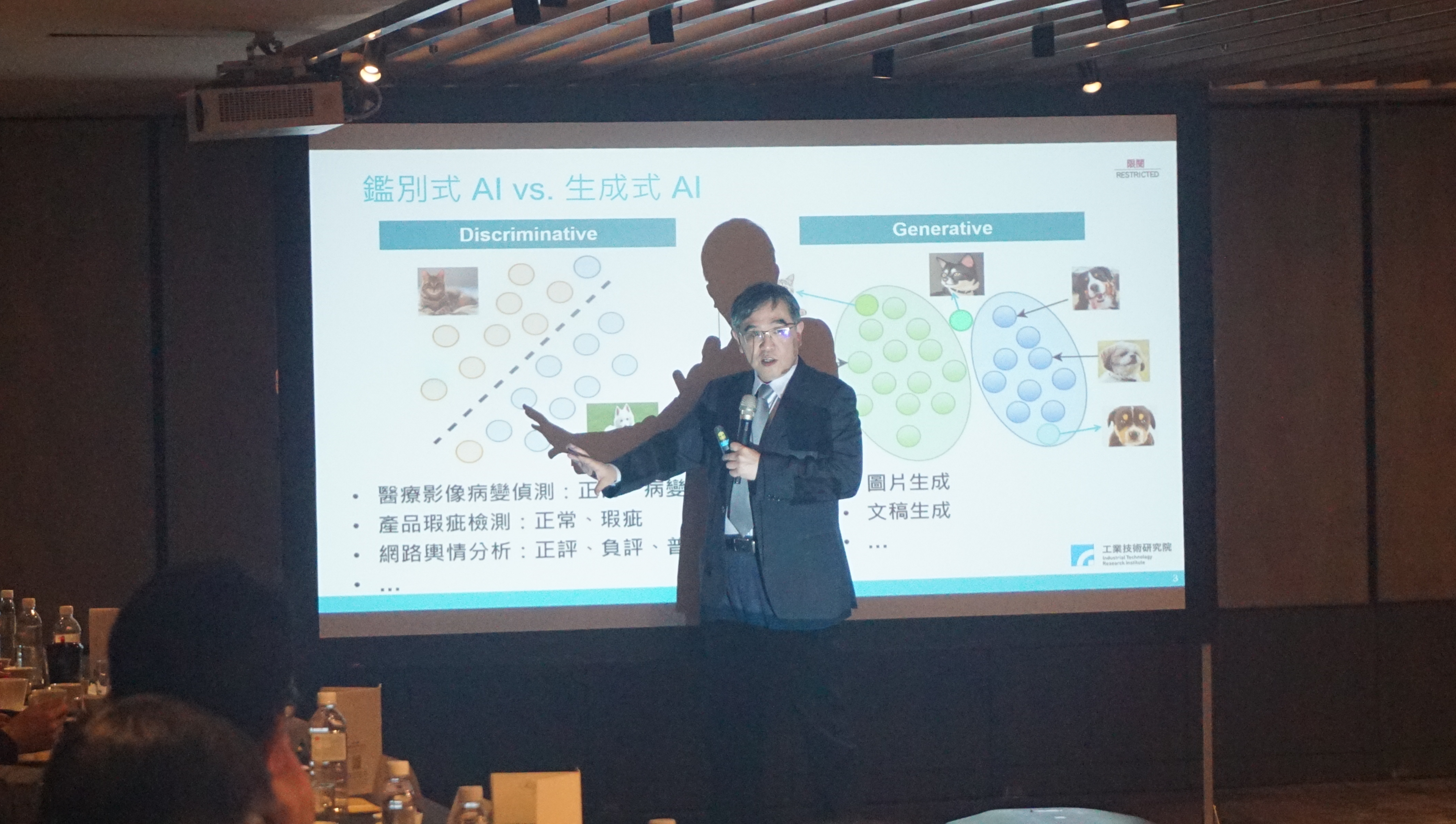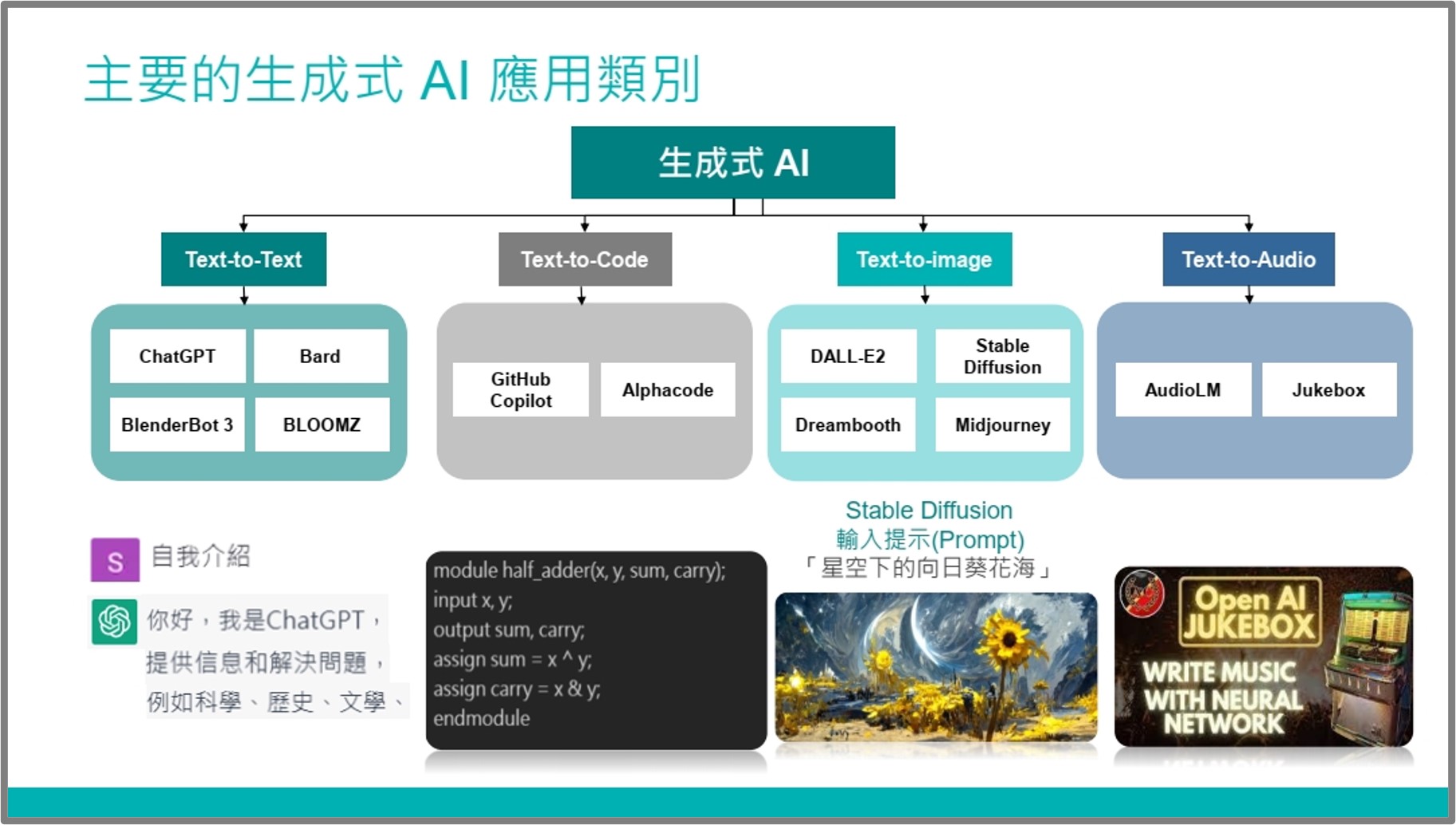 Board of directors focuses on plenary session一一
Board of directors focuses on plenary session一一
The board of directors meeting of Cloud Computing Association in Taiwan (CIAT) was held on April 13th, 2023. The keynote speakers were Dr. Charles Tsai, the CTO of Delta Electronics' Information Communication Technology Infrastructure Business Group, and Dr. Shiaw-Shian Yu, the Chairman of the Technology Experts Committee and also the Executive Operating Officer of Industrial Technology Research Institute (ITRI) . They shared insights on the topics of net-zero carbon emissions and generative AI.
Dr. Charles Tsai:The Challenges of Net Zero Emissions for Cloud Data Centers
 Dr. Charles Tsai gives a presentation on " The Challenges of Net Zero Emissions for Cloud Data Centers"一一
Dr. Charles Tsai gives a presentation on " The Challenges of Net Zero Emissions for Cloud Data Centers"一一
Dr. Charles Tsai discussing Delta Electronics' products and services for data centers, such as the transition from traditional air cooling to liquid and immersion cooling. He also used Delta Electronics' Sydney, Australia data center as an example to explain what a hyperscale data center is.
Dr. Tsai pointed out that data center that drives market development is a very "power consuming". He believes that in the future, data centers will increasingly be used for AI applications. However, social responsibility cannot be ignored. He also emphasized that products that can be electrified should be electrified and powered by various renewable energy sources, such as hydrogen energy.
Reduce electrical power from fossil fuel、Water Conservation Recycling and Waste management.
 Photo of Hyper Scale Cloud Data Center一一
Photo of Hyper Scale Cloud Data Center一一
Dr. Tsai then explained how organizations that use data centers can achieve net zero emissions. He suggested focusing on three areas: reducing the use of electricity from fossil fuels, water conservation, and recycling and waste management. Finally, Dr. Tsai shared that when there is excess renewable energy, it can be stored as hydrogen energy. He looks forward to a future where ideal data centers use clean energy, produce no noise, and require no human intervention.
Dr. Shiaw-Shian Yu:An Introduction to Generative AI and ChatGPT
 Dr. Shiaw-Shian Yu shares his observations on the topic "An Introduction to Generative AI and ChatGPT"一一
Dr. Shiaw-Shian Yu shares his observations on the topic "An Introduction to Generative AI and ChatGPT"一一
Dr. Yu mentioned that early AI models used discriminative learning, but more recently, there has been a shift towards generative AI. Over the past decade, the most significant development in AI has been in deep learning, and ChatGPT is a part of this development. In terms of generative AI, there are four categories: text-to-text, text-to-code, text-to-image, and text-to-audio.
The characteristic of generative AI is that it is based on a pre-trained model with a massive amount of data. Later, it can be fine-tuned with a small amount of data in specific domains to become what we now know as ChatGPT. ChatGPT is trained to predict and generate text through text completion, and it has the ability to understand and generate text. It is a multilingual, multifunctional model that operates in a conversational manner.
Currently, one of the researches focuses of ChatGPT is "how to ask questions." Dr. Yu gave several examples of testing ChatGPT with different questions and explaining the strengths and weaknesses of the model's responses. He mentioned that ChatGPT can deduce and synthesize answers from vast amounts of known data. However, ChatGPT can also give irrelevant or nonsensical responses, so it is crucial to use the model properly.
 Four major generative AI application categories一一
Four major generative AI application categories一一
Lastly, Dr. Yu believes that the power of GPT comes from self-supervised learning, high-dimensional parameters, massive amounts of data, and how to use GPT, considering data sensitivity and result accuracy. If ChatGPT is used as an assistant, its contents will be reviewed, and errors can be corrected. However, if used as a coach, users who cannot distinguish accuracy may easily make mistakes.